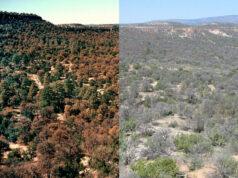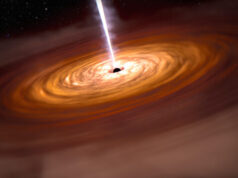Hundreds of pterosaur bones laying on the surface, demonstrating the richness of these sites. This material relates to a paper that appeared in the 1 December 2017, issue of Science, published by AAAS. The paper, by X. Wang at Chinese Academy of Sciences in Beijing, China, and colleagues was titled, “Egg accumulation with 3D embryos provides insight into the life history of a pterosaur.”
Credit: Alexander Kellner (Museu Nacional/UFRJ)
An invaluable collection of more than 200 eggs is providing new insights into the development and nesting habits of pterosaurs.
To date, only a small handful of pterosaur eggs with a well-preserved 3-D structure and embryo inside have been found and analyzed — three eggs from Argentina and five from China. This sparse sample size was dramatically increased upon the discovery of 215 eggs of the pterosaurs species Hamipterus tianshanensis from a Lower Cretaceous site in China.
Xiaolin Wang et al. used computed tomography scanning to peer inside the eggs, 16 of which contain embryonic remains of varying intactness. The most complete embryo contains a partial wing and cranial bones, including a complete lower jaw. The samples of thigh bones that remain intact are well-developed, suggesting that the species benefited from functional hind legs shortly after hatching.
Find your dream job in the space industry. Check our Space Job Board »
However, the structure supporting the pectoral muscle appears to be underdeveloped during the embryonic stage, suggesting that newborns were likely not able to fly. Therefore, the authors propose that newborns likely needed some parental care. Based on growth marks, the team estimates one of the individuals to be at least 2 years old and still growing at the time of its death, supporting the growing body of evidence that pterosaurs had long incubation periods.
Lastly, the fact that a single collection of embryos exhibits a range of developmental stages hints that pterosaurs participated in colonial nesting behavior, the authors say. Denis Deeming discusses these findings in a related Perspective.
Story Source: Materials provided by American Association for the Advancement of Science. Note: Content may be edited for style and length.
Journal Reference:
Xiaolin Wang, Alexander W. A. Kellner, Shunxing Jiang, Xin Cheng, Qiang Wang, Yingxia Ma, Yahefujiang Paidoula, Taissa Rodrigues, He Chen, Juliana M. Sayão, Ning Li, Jialiang Zhang, Renan A. M. Bantim, Xi Meng, Xinjun Zhang, Rui Qiu, Zhonghe Zhou. Egg accumulation with 3D embryos provides insight into the life history of a pterosaur. Science, 2017; 358 (6367): 1197 DOI: 10.1126/science.aan2329











